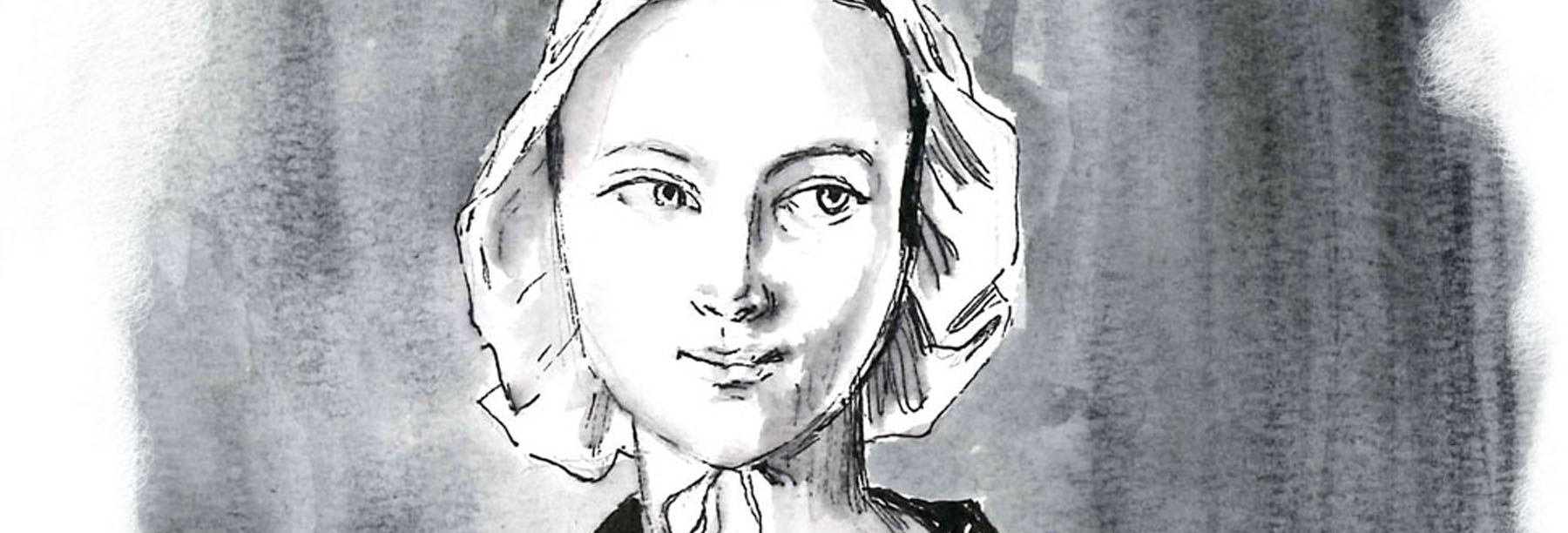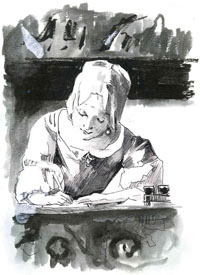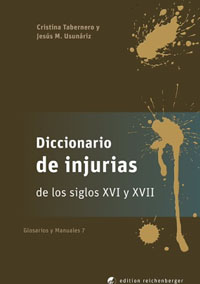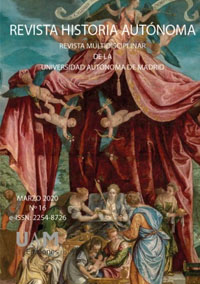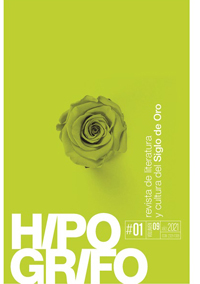Discursive Universes and Female Identity: Elites and Popular Culture (1600-1850)
HAR2017-84615-P | Ministry of Science, Innovation and Universities
The general goal of project consists of the analysis of the social uses of women's language between the 17th and 19th centuries from the perspective and methodology of the "social history of language", promoted by Peter Burke, or what linguists know as "linguistics partner-historical" or "historical sociolinguistics" and "historical analysis of speech" or "historical pragmatics". Starting from language as an essential part of culture and everyday life, speech will be analysed from a double perspective, that of the elites and that of the popular levels, as a way of accessing the existing connections between these two worlds, as well as the transformations undergone in them, mainly in the transition between the Old and the New Regime. Given its interdisciplinary perspective, the sources are both printed and documentary; among the latter, special attention is paid to the scarcely studied textual subject of judicial processes.
Specifically, the focus will be on the femalespeech of the elite and its evolution in the 17th and 19th centuries, examining the linguistic behaviour of women belonging to the privileged classes, as well as their forms of expression in different spheres (courtly, literary, ecclesiastical).
In addition, we will analyse the popular speech and its evolution in the 17th and 19th centuries through its various manifestations and uses (songs, libels, insults, correspondence), which allow us to approach the study of different social relationships (love, friendship, hatred, familiarity, solidarity, political networks, deference, honour, marginality).
On the other hand, the transformations of both discourses in the so-called crisis of the Ancien Régime will be dealt with in order to explain the reasons for these changes and their consequences in the cultural and social sphere of everyday use.
In this way, we will obtain a characterisation of the female speech between the 17th and 19th centuries in its various manifestations or discursive universes; we will identify the aspects that contrast the male and female speech in the same period and in their different spheres of action; through the female speech we will verify the function of social change as a motor of linguistic change and we will expose the intrinsic relationship between the identifying features of the female speech and the social role of women between the Sixteenth and the Nineteenth Centuries.
Principal Investigators
Jesús M. Usunáriz
jusunariz@unav.es
Ismael Sánchez Bella Building
31009 Pamplona, Spain
+34 948 42 56 00 x
Cristina Tabernero
ctabernero@unav.es
Ismael Sánchez Bella Building
31009 Pamplona, Spain
+34 948 42 56 00 x
The team
Principal Investigators
-
Jesús M. Usunáriz (University of Navarra, GRISO)
-
Cristina Tabernero (University of Navarra, GRISO)
Researchers:
-
María del Mar Larraza Micheltorena (University of Navarra, Spain)
-
Concepción Martínez Pasamar (University of Navarra, Spain)
-
Pablo Orduna Portús (UNIR, Basque Culinary Center, Spain)
-
Maite Iraceburu Jiménez (Università degli Studi di Firenze, Italy)
-
Ignacio D. Arellano Torres (Stony Brook University, New York, USA)
-
Jesús Dorado Blanco (University of Navarra, GRISO, Spain)
Publications
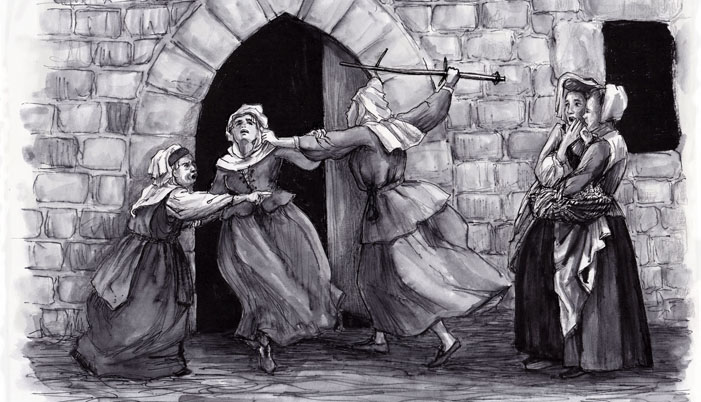
Books |
Monographs in magazines |
|
Tabernero, C. and J.M. Usunáriz (2019): Diccionario de injurias de los siglos XVI y XVII, Kassel, Reichenberger. |
Monographic dossier "Nacer en tiempos de Calderón: universos femeninos y culturas del parto en el Siglo de Oro", coord. Wolfram Aichinger and Jesús M. Usunáriz, Revista Historia Autónoma, 16, 2020. |
|
------ |
------ |
|
Cristina Tabernero and Jesús M. Usunáriz (eds.), Saints, powerful and sinners: representation and reality of women between the 16th and 19th centuriesNew York, IDEA, 2021. |
Monographic section "Voces y espacios femeninos en el mundo hispánico (siglos XVI-XVIII)", coordinated by Cristina Tabernero, Hipogrifo. Revista de literatura y cultura del Siglo de Oro, 9.1, 2021. |
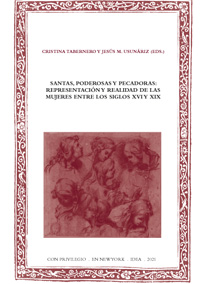 |
|
Articles and book chapters
-
DORADO BLANCO, J. (2019) "Aproximaciones metodológicas a la imagen de la mujer en las relaciones de sucesos en los siglos XVI y XVII", in C. Mata and S. Santa (eds.) "Ars longa". conference proceedings del VIII congress internacional Jóvenes investigadores Siglo de Oro (JISO 2018), Pamplona, Publishing Services of the University of Navarra, 95-105.
-
DORADO BLANCO, J. (2019) review a Ciappelli, Giovanni and Valentina Nider (eds.), La invención de las noticias. Las relaciones de sucesos entre la literatura y la información (siglos XVI-XVIII), Trento, Università degli Studi di Trento-Dipartimento di Lettere e Filosofia, 2017, in report y civilización: yearbook de Historia, nº22, 1-6.
-
GARCÍA CHALARCA, S. (2019) "Imagen y speech femenino del español clásico al primer español moderno", in C. Mata and S. Santa (eds.), "Ars longa". conference proceedings del VIII congress internacional Jóvenes investigadores Siglo de Oro (JISO 2018), Pamplona, Publishing Services of the University of Navarra, pp. 125-136.
-
IRACEBURU JIMENEZ, M., MARTÍNEZ PASAMAR, C. and C. TABERNERO conference room (2018): "presentation del project del research del group TesUN (Universidad de Navarra)", in Alcantará Plá, M., Nicolás Martínez, C. and A. Panunzi (eds.), CHIMERA. Romance Corpora and Linguistic Studies, 5.2, 321-327.
-
IRACEBURU JIMENEZ, M. (2019): "Las relaciones de sucesos como instrumento de control: el caso de los antimodelos femeninos", report y Civilización, 22, 1-30.
-
IRACEBURU JIMENEZ, M. (2019): "Aproximación lingüística a Ana Caro de Mallén, autora de relaciones de sucesos", in Mata Induráin, C. and S. Santa Aguilar (eds.): "Ars longa". conference proceedings del VIII congress Internacional Jóvenes Investigadores Siglo de Oro (JISO 2018), Pamplona, Publishing Services of the University of Navarra. BIADIG Collection (Library Services Áurea Digital), 50 / GRISO Digital Publications, 173-186.
-
MARTÍNEZ PASAMAR, C. (2019) "Fenómenos de covariación lingüística en cartas del siglo XIX: las estrategias de intensificación y otras dimensiones de la variación", in Mónica Castillo Lluch and Elena Diez del Corral Areta (eds.), Reescribiendo la historia de la language española a partir de la edición de documentos, Berna, Peter Lang, 421-444.
-
MARTÍNEZ PASAMAR, C. (2019) "Ea, pues, alerta. Manifestaciones de oralidad y dialoguicidad fingida en un sermón de entresiglos (XVIII-XIX), in Luis Alburquerque García et al. (eds.), Vir bonus dicendi peritus. Homenaje al profesor Miguel Ángel Garrido Gallardo, Madrid, CSIC, 606-619.
-
TABERNERO, C. (2018), "Indicadores sociolingüísticos y pragmáticos del insulto (siglos XVI y XVII)", in conference proceedings del X congress Internacional de Historia de la language Española, ed. M. Luisa Arnal, Rosa M. Castañer, J. M.ª Enguita , V. Lagüéns and M. Antonia Martín Zorraquino, Zaragoza, Institución "Fernando el Católico", vol. 2, 1459-1477.
-
TABERNERO, C. (2018), "Fórmulas de cortesía y mecanismos de atenuación en la retórica epistolar del siglo XIX", in Reescribiendo la historia de la language española a través de los documentos, ed. Mónica Castillo and Elena Díez del Corral, Bern, Peter Lang, 391-419.
-
TABERNERO, C. (2018), ""Veceras de mal decir" e "infamadas": el insulto femenino en la interacción comunicativa del Siglo de Oro", Hipogrifo, 6.1, 2, 729-756.
-
TABERNERO, C. (2019), "Pragmatics of insult: from prescription to use in verbal aggression between women", Hipogrifo, 7.1, 2019, 397-420.
-
TABERNERO, C. (2019)""Larga he sido pero no cuanto cuanto deseo": las mujeres como redactoras de cartas en la cultura escrita de la Edad Moderna", Melisendra. Journal of Spanish Early Modernity Studies, 1, 5-36.
-
TABERNERO, C. (2020), "Las denominaciones de 'parir' y 'malparir' en la historia del léxico", Revista Historia Autónoma, 16, 83-100.
-
TABERNERO, C. (2020), "Contribución al estudio del español norteño a través de un corpus de declaraciones en procesos judiciales", Scriptum Digital, 9, pp. 87-115.
-
USUNÁRIZ, J. M. (2018), "El padre ante el parto en la España de los siglos XVI y XVI", Hipogrifo, 6.1, 483-502.
-
USUNÁRIZ, J. M. (2019), "Dos Hidalgas "enamoradas": escritura epistolar femenina, Pasiones y estrategias (siglos XVI-XVIII)", Cuadernos de Historia Moderna, 44, 2, 607-629.
-
USUNÁRIZ, J. M. (2019, in press), "Estigma, enfermedad y "speech deshonesta": el insulto "buboso", "bubosa", en Prostitución, Madrid, Siag-Pigmalión.
-
USUNÁRIZ, J.M. (2019) "La violencia verbal entre marido y mujer en los siglos XVI y XVII", Melisendra. Journal of Spanish Early Modernity Studies, 1, 70-86.
-
USUNÁRIZ, J. M. (2020), "attend a la madre y cuidar de la criatura: el reconocimiento de la paternidad en los siglos XVI y XVII", Revista Historia Autónoma, 16, 101-119.
Congresses and exhibitions
-
seminar international conference "Women and female discursive universes in the documentary sources of the Modern Age".co-organized by the project BIDISO of (Universidade da Coruña) and the project "Universos discursivos e identidad femenina" (Universidad de Navarra), Universidade da Coruña, A Coruña, 28-30 June 2021.[PDF]
-
exhibition "Voz y letra de mujer", 1-31 March 2021, Library Services de la Rioja. Curated by Concepción Martínez Pasamar, Cristina Tabernero and Jesús M. Usunáriz.[PDF]
-
workshop on line "Emotions. Navarra. Siglos XVI-XIX" (Emotions. Navarre. 16th-19th centuries)co-organised by the Chair de language y Cultura Vasca-Euskal Hizkuntza eta Kultur Katedra of the University of Navarra and the Government of Navarra, with the partnership de Bibliotecas Públicas de Navarra, Pamplona, University of Navarra, 20 November 2020. link de conexión link de conexión
-
exhibition "Maleficium. Navarra y la caza de brujas (siglos XIV-XVII)" (Maleficium.Navarre and the witch-hunt (14th-17th centuries))., July-December 2020, file General de Navarra. Curated by Jesús M. Usunáriz. [Video] [Video] [Video] [Video] [Video] [Video] [Video] [Video] [Video
-
exhibition "Voz y letra de mujer"("Women's voice and handwriting"), 6 March to 15 April 2020, Library Services General de Navarra. Curated by Concepción Martínez Pasamar, Cristina Tabernero and Jesús M. Usunáriz.
-
International Symposium "Nacer en tiempos de Calderón: universos femeninos y cultura del parto en el Siglo de Oro" (Being born in Calderón's time: feminine universes and the culture of childbirth in the Golden Age).co-organised by Jesús M. Usunáriz (University of Navarra, GRISO) and Wolfram Aichinger (University of Vienna), Vienna (Austria), University of Vienna, 13-14 April 2018.
News
-
This is how people insulted each other in the 16th and 17th centuries [Diario de Navarra. 28/09/2020].
-
Dictionary of insults from the 16th and 17th centuries: Tapa de cuba, mentecato... [Onda Cero: 28/09/2020].
-
Hediondo, legañosa, andaluz, tocino: the best insults of the Golden Age [El País 24/02/2020].
-
Navarre, four centuries of witch-hunting [Diario de Navarra: 28/09/2020].
-
The file of Navarra hosts the exhibition "Maleficium. Navarra and the witch-hunts (14th-17th centuries)" [Navarra.es: 28/09/2020] [Navarra.es: 28/09/2020].
-
"In Europe a great many witches were burned, it is said that 50,000 people were executed" [eitb.eus: 28/09/2020].
Image credits
Cover photo: Ink from the oil painting "Seamstress", by Christian Seibold (c. 1750) ©From the illustration, Concha Pasamar
Photo of 'Team': Ink from a detail of "Woman writing a love letter", by Jan Vermeer (c. 1670). ©From the illustration by Concha Pasamar
Photo from 'Publications': illustration by Concha Pasamar

